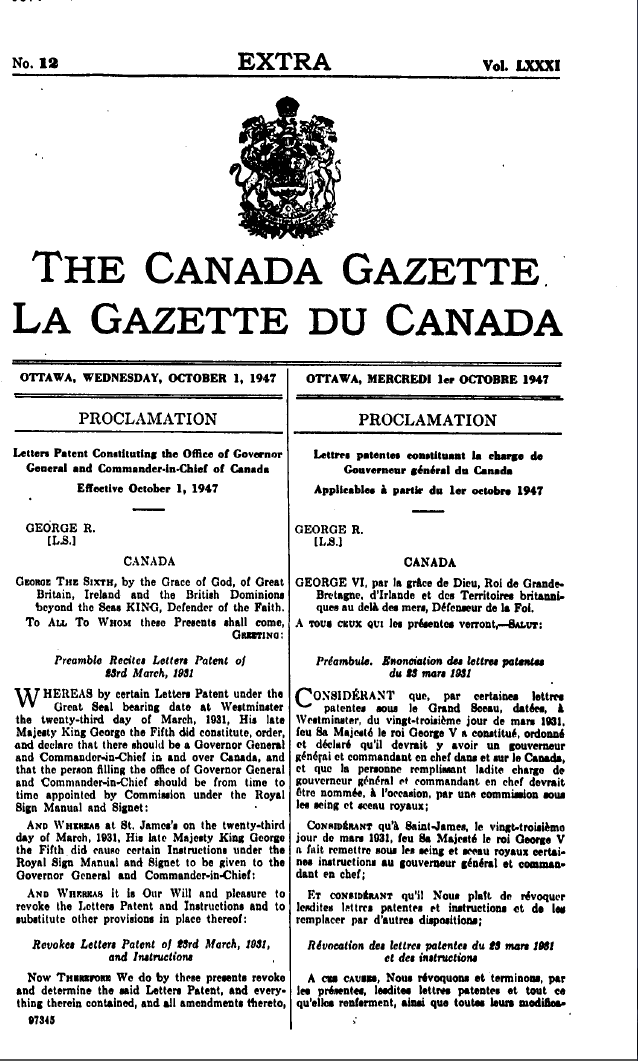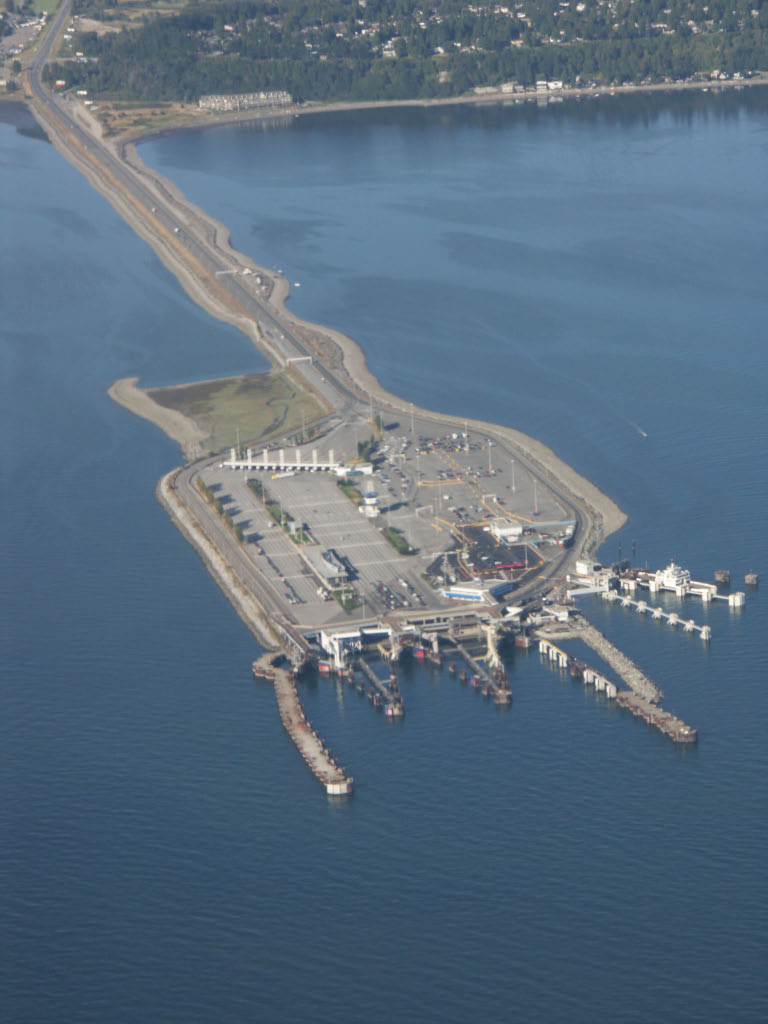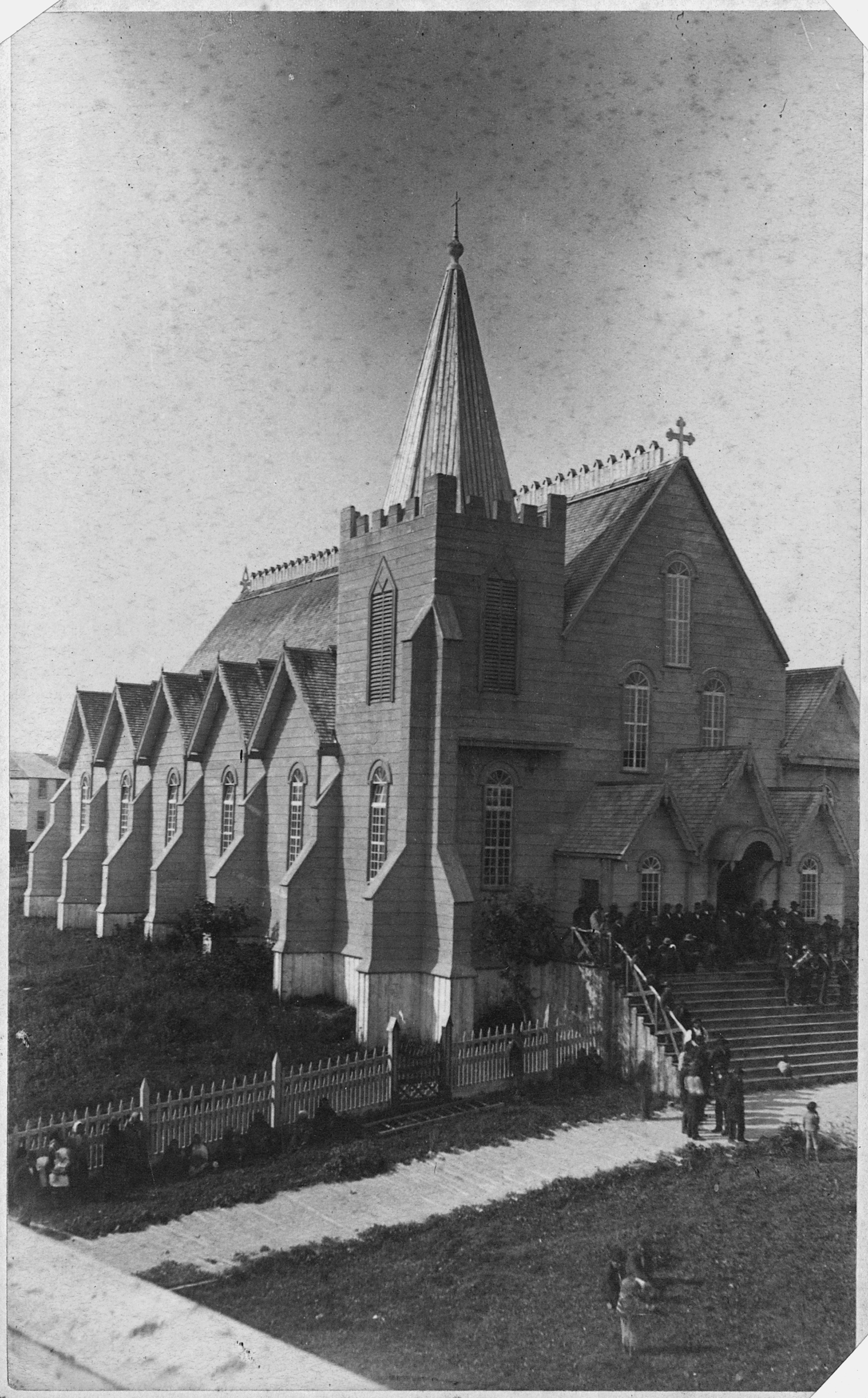|
Hartley Bay
Hartley Bay is a First Nations community on the coast of British Columbia. The village is located at the mouth of Douglas Channel, about north of Vancouver and south of Prince Rupert. It is an isolated village accessible only by air and water with a population of 200. It is home to the Gitga'ata (sometimes Gitga'at or Gitk'a'ata), which means "People of the Cane." The Gitga'at are members of the Tsimshian nation. As of 2013, 167 band members live on the reserve and 533 members live off reserve in Prince Rupert, Vancouver or other regions. The community is served by seaplane and ferry from Prince Rupert. A distinctive feature of the community is the wooden boardwalks which are used rather than gravel roads. History and culture The Gitga'at geographical name for the bay where the village is situated is Txałgiu. This name was anglicised to Kalkayu when Indian reserves were formed in 1889, these being Kulkayu (Hartley Bay) Indian Reserve No. 4 and Kulkayu (Hartley Bay) Indian ... [...More Info...] [...Related Items...] OR: [Wikipedia] [Google] [Baidu] |
British Columbia
British Columbia (commonly abbreviated as BC) is the westernmost Provinces and territories of Canada, province of Canada, situated between the Pacific Ocean and the Rocky Mountains. It has a diverse geography, with rugged landscapes that include rocky coastlines, sandy beaches, forests, lakes, mountains, inland deserts and grassy plains, and borders the province of Alberta to the east and the Yukon and Northwest Territories to the north. With an estimated population of 5.3million as of 2022, it is Canada's Population of Canada by province and territory, third-most populous province. The capital of British Columbia is Victoria, British Columbia, Victoria and its largest city is Vancouver. Vancouver is List of census metropolitan areas and agglomerations in Canada, the third-largest metropolitan area in Canada; the 2021 Canadian census, 2021 census recorded 2.6million people in Metro Vancouver Regional District, Metro Vancouver. The First Nations in Canada, first known human inhabi ... [...More Info...] [...Related Items...] OR: [Wikipedia] [Google] [Baidu] |
Metlakatla, British Columbia
Metlakatla, British Columbia (Tsimshian: ''Maxłaxaała'') is a small community that is one of the seven Tsimshian village communities in British Columbia, Canada. It is situated at Metlakatla Pass near Prince Rupert, British Columbia. It is the one Tsimshian village in Canada that is not associated with one particular tribe or set of tribes out of the Tsimshian nation's 14 constituent tribes. History The name derives from Tsimshian ''Maaxłakxaała'' meaning "saltwater pass." Traditionally, this site has been the collective winter village of the "Nine Tribes" of the lower Skeena River, which since 1834 have been mostly based at Lax Kw'alaams, B.C. In 1862, the Anglican lay minister William Duncan established at Metlakatla a utopian Christian community, made up of about 350 Tsimshian from Lax Kw'alaams (a.k.a. Port Simpson) but with members of other Tsimshian tribes as well. Almost immediately thereafter, the 1862 Pacific Northwest smallpox epidemic tore through Lax Kw'al ... [...More Info...] [...Related Items...] OR: [Wikipedia] [Google] [Baidu] |
Oceanic Climate
An oceanic climate, also known as a marine climate, is the humid temperate climate sub-type in Köppen classification ''Cfb'', typical of west coasts in higher middle latitudes of continents, generally featuring cool summers and mild winters (for their latitude), with a relatively narrow annual temperature range and few extremes of temperature. Oceanic climates can be found in both hemispheres generally between 45 and 63 latitude, most notably in northwestern Europe, northwestern America, as well as New Zealand. Precipitation Locations with oceanic climates tend to feature frequent cloudy conditions with precipitation, low hanging clouds, and frequent fronts and storms. Thunderstorms are normally few, since strong daytime heating and hot and cold air masses meet infrequently in the region. In most areas with an oceanic climate, precipitation comes in the form of rain for the majority of the year. However, some areas with this climate see some snowfall annually during winter. ... [...More Info...] [...Related Items...] OR: [Wikipedia] [Google] [Baidu] |
Köppen Climate Classification
The Köppen climate classification is one of the most widely used climate classification systems. It was first published by German-Russian climatologist Wladimir Köppen (1846–1940) in 1884, with several later modifications by Köppen, notably in 1918 and 1936. Later, the climatologist Rudolf Geiger (1894–1981) introduced some changes to the classification system, which is thus sometimes called the Köppen–Geiger climate classification system. The Köppen climate classification divides climates into five main climate groups, with each group being divided based on seasonal precipitation and temperature patterns. The five main groups are ''A'' (tropical), ''B'' (arid), ''C'' (temperate), ''D'' (continental), and ''E'' (polar). Each group and subgroup is represented by a letter. All climates are assigned a main group (the first letter). All climates except for those in the ''E'' group are assigned a seasonal precipitation subgroup (the second letter). For example, ''Af'' i ... [...More Info...] [...Related Items...] OR: [Wikipedia] [Google] [Baidu] |
Governor General Of Canada
The governor general of Canada (french: gouverneure générale du Canada) is the federal viceregal representative of the . The is head of state of Canada and the 14 other Commonwealth realms, but resides in oldest and most populous realm, the United Kingdom. The , on the advice of Canadian prime minister, appoints a governor general to carry on the Government of Canada in the 's name, performing most of constitutional and ceremonial duties. The commission is for an indefinite period—known as serving '' at Majesty's pleasure''—though five years is the usual length of time. Since 1959, it has also been traditional to alternate between francophone and anglophone officeholders—although many recent governors general have been bilingual. The office began in the 17th century, when the French crown appointed governors of the colony of Canada. Following the British conquest of the colony, the British monarch appointed governors of the Province of Quebec (later the C ... [...More Info...] [...Related Items...] OR: [Wikipedia] [Google] [Baidu] |
Canadian Coast Guard
The Canadian Coast Guard (CCG; french: links=no, Garde côtière canadienne, GCC) is the coast guard of Canada. Formed in 1962, the coast guard is tasked with marine search and rescue (SAR), communication, navigation, and transportation issues in Canadian waters, such as navigation aids and icebreaking, marine pollution response, and support for other Canadian government initiatives. The coast guard operates 119 vessels of varying sizes and 23 helicopters, along with a variety of smaller craft. The CCG is headquartered in Ottawa, Ontario, and is a special operating agency within Fisheries and Oceans Canada (Department of Fisheries and Oceans). Role and responsibility Unlike armed coast guards of some other nations, the CCG is a government marine organization without naval or law enforcement responsibilities. Naval operations in Canada's maritime environment are exclusively the responsibility of the Royal Canadian Navy. Enforcement of Canada's maritime-related federal statutes m ... [...More Info...] [...Related Items...] OR: [Wikipedia] [Google] [Baidu] |
MV Queen Of The North
MV ''Queen of the North'' was a roll-on/roll-off (RORO) ferry built by AG Weser of Germany and operated by BC Ferries, which ran along an 18-hour route along the British Columbia Coast of Canada between Port Hardy and Prince Rupert, British Columbia, a route also known as the Inside Passage. On March 22, 2006, with 101 people aboard, she failed to make a planned course change, ran aground and sank (around 1400 ft). Two passengers, whose bodies were never found, died in the incident. The ship had a gross register tonnage of 8,806 (the fifth largest in fleet), and an overall length of (14th longest in the fleet). She had a capacity of 700 passengers and 115 cars. History Construction and service with Stena Line The ship was built by AG Weser, Bremerhaven, Germany in 1969, and was originally operated by Stena Line as ''Stena Danica'' on the route between Gothenburg (Sweden) and Frederikshavn (Denmark). She was sold to BC Ferries for CAD $13.875 million. With federal impo ... [...More Info...] [...Related Items...] OR: [Wikipedia] [Google] [Baidu] |
BC Ferries
British Columbia Ferry Services Inc., operating as BC Ferries (BCF), is a former provincial Crown corporation, now operating as an independently managed, publicly owned Canadian company. BC Ferries provides all major passenger and vehicle ferry services for coastal and island communities in the Canadian province of British Columbia. Set up in 1960 to provide a similar service to that provided by the Black Ball Line and the Canadian Pacific Railway, which were affected by job action at the time, BC Ferries has become the largest passenger ferry line in North America, operating a fleet of 36 vessels with a total passenger and crew capacity of over 27,000, serving 47 locations on the B.C. coast. The federal and provincial governments subsidize BC Ferries to provide agreed service levels on essential links between the BC mainland, coastal islands, and parts of the mainland without road access. The inland ferries operating on British Columbia's rivers and lakes are not run by B ... [...More Info...] [...Related Items...] OR: [Wikipedia] [Google] [Baidu] |
Hartley Bay Water Aerodrome
Hartley Bay Water Aerodrome is located adjacent to Hartley Bay, British Columbia, Canada Canada is a country in North America. Its ten provinces and three territories extend from the Atlantic Ocean to the Pacific Ocean and northward into the Arctic Ocean, covering over , making it the world's second-largest country by tota .... References Seaplane bases in British Columbia North Coast Regional District Registered aerodromes in British Columbia {{BritishColumbia-airport-stub ... [...More Info...] [...Related Items...] OR: [Wikipedia] [Google] [Baidu] |
Metlakatla, Alaska
Metlakatla (; Tsimshian: ''Maxłakxaała'' or ''Wil uks t’aa mediik''; Lingít: ''Tàakw.àani'') is a census-designated place (CDP) on Annette Island in Prince of Wales-Hyder Census Area, Alaska, United States. At the 2010 census the population was 1,405; this had grown to 1,454 by the 2020 census. Since the late 19th century, it has been the major settlement of the Metlakatla Indian Community of the federally recognized Annette Island Reserve, the only remaining reserve in Alaska. The Metlakatla voted to opt out of the Alaska Native Claims Settlement Act of the 1970s and retained rights to their land and waters. Membership in the community is primarily by lineage; it consists primarily of Tsimshian people and also includes those from other Alaskan Native tribes who wish to join the Metlakatla Indian Community as a bona fide member. Bona fide membership is granted upon approval of the Metlakatla Tribal Council and Executives. History ''Metlakatla'' comes from ''Maxła ... [...More Info...] [...Related Items...] OR: [Wikipedia] [Google] [Baidu] |
William Duncan (missionary)
William Duncan (3 April 1832 – 30 August 1918) was an English-born Anglican missionary who founded the Tsimshian communities of Metlakatla, British Columbia, in Canada, and Metlakatla, Alaska, in the United States. Although sometimes referred to as "Father Duncan" in subsequent reports, he was never ordained. Early years Duncan was born in the hamlet of Bishop Burton, Yorkshire, England, the illegitimate son of Maria Duncan, a teenaged servant. He was raised by his mother's parents, William and Elizabeth Duncan. In the 1841 census he is recorded as living with his father and his sister Mary Duncan on Lairgate in Beverley. In 1851 he was lodging with William Botterill, a tailor, and Mary Botterill in Keldgate, Beverley and his occupation is described as book-keeper. Duncan later worked in his grandfather/adoptive father's trade as a tanner. Duncan became the only churchgoer in his impoverished family. In 1854 he joined the Church Missionary Society (CMS) and attende ... [...More Info...] [...Related Items...] OR: [Wikipedia] [Google] [Baidu] |
George Vancouver
Post-captain, Captain George Vancouver (22 June 1757 – 10 May 1798) was a British Royal Navy officer best known for his Vancouver Expedition, 1791–1795 expedition, which explored and charted North America's northwestern West Coast of the United States, Pacific Coast regions, including the coasts of what are now the Provinces and territories of Canada, Canadian province of British Columbia as well as the U.S. state, US states of Alaska, Washington (state), Washington and Oregon. He also explored the Hawaiian Islands and the southwest coast of Australia. Vancouver Island, the city of Vancouver in British Columbia, Vancouver, Washington in the United States, Mount Vancouver on the Canadian–US border between Yukon and Alaska, and New Zealand's Mount Vancouver (New Zealand), fourth-highest mountain, also Mount Vancouver (New Zealand), Mount Vancouver, are all named after him. Early life George Vancouver was born in the seaport town of King's Lynn (Norfolk, England) on 22 June ... [...More Info...] [...Related Items...] OR: [Wikipedia] [Google] [Baidu] |





.jpeg)

